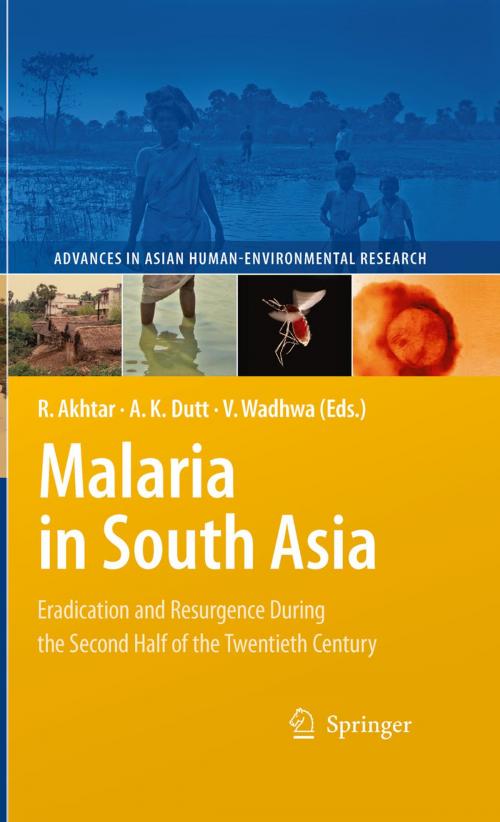Malaria in South Asia
Eradication and Resurgence During the Second Half of the Twentieth Century
Nonfiction, Social & Cultural Studies, Social Science, Human Geography, Health & Well Being, Medical, Reference, Public Health, Science & Nature, Science| Author: | ISBN: | 9789048133581 | |
| Publisher: | Springer Netherlands | Publication: | December 4, 2009 |
| Imprint: | Springer | Language: | English |
| Author: | |
| ISBN: | 9789048133581 |
| Publisher: | Springer Netherlands |
| Publication: | December 4, 2009 |
| Imprint: | Springer |
| Language: | English |
Malaria is one of the most widespread and devastating infectious diseases in the world. More than half the world population residing in over 100 countries is at risk of infection from this vector-borne disease. An estimated 250–500 million mal- ial cases occur each year, resulting in nearly one million deaths, the overwhelming majority of which are children. Because of the magnitude of the associated fata- ties, development experts consider malaria a ‘silent tsunami,’ comparing its death toll to the Indian Ocean tsunami (IOT) that ravaged several countries of South and Southeast Asia on December 26, 2004. That tsunami killed some 300,000 people (including children) at once. Globally, malarial deaths account for about 9% of all childhood deaths each year. However, with malaria more than most fatal d- eases, mortality is a small fraction of morbidity. Malaria is a debilitating disease, particularly for the adult population. In addition to children, pregnant women and migrating populations are most v- nerable to malaria. Miscarriage, stillbirth, and low birth weight are common among pregnant women who are infected with this disease. Malaria manifests itself through recurrent fever and chills, with associated symptoms such as anemia and an enlarged spleen. If a person survives the disease, he or she will develop a certain degree of immunity for some years. But malaria victims are not only deprived of energy, they also face an increased risk of other diseases taking hold in the weakened body.
Malaria is one of the most widespread and devastating infectious diseases in the world. More than half the world population residing in over 100 countries is at risk of infection from this vector-borne disease. An estimated 250–500 million mal- ial cases occur each year, resulting in nearly one million deaths, the overwhelming majority of which are children. Because of the magnitude of the associated fata- ties, development experts consider malaria a ‘silent tsunami,’ comparing its death toll to the Indian Ocean tsunami (IOT) that ravaged several countries of South and Southeast Asia on December 26, 2004. That tsunami killed some 300,000 people (including children) at once. Globally, malarial deaths account for about 9% of all childhood deaths each year. However, with malaria more than most fatal d- eases, mortality is a small fraction of morbidity. Malaria is a debilitating disease, particularly for the adult population. In addition to children, pregnant women and migrating populations are most v- nerable to malaria. Miscarriage, stillbirth, and low birth weight are common among pregnant women who are infected with this disease. Malaria manifests itself through recurrent fever and chills, with associated symptoms such as anemia and an enlarged spleen. If a person survives the disease, he or she will develop a certain degree of immunity for some years. But malaria victims are not only deprived of energy, they also face an increased risk of other diseases taking hold in the weakened body.















